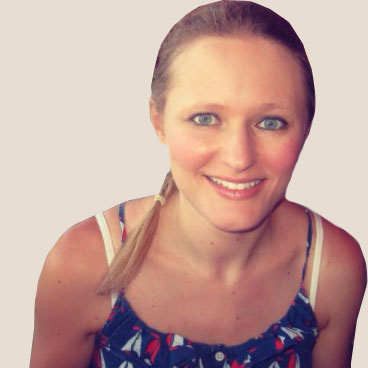5 questions every runner should ask themselves
Running is a great workout - but are you running right? Ask yourself these key questions to ensure you’re getting the most from your workout…


We all know that regularly running can be great for your health – but poor technique or exercise gear may stop you getting the most out of your workout and even lead to injury.
To ensure you’re maximising your performance when you pull on your trainers and head out for a run, consider these five key questions - and if needed, make adjustments to make sure you’re running right…
- We pick the best running shoes for women and best running shoes for men
- Track your progress with the best running watches
- The best running earbuds for your workout soundtrack
Question 1: Do your running shoes fit properly?
Choosing the right running shoes is paramount. On your next run, spend some time assessing your shoes, asking yourself are they…
Too small: Do your toes feel cramped?
Too big: Is your foot moving about?
Causing you blisters: New shoes may rub your heel but are you getting sore spots on your toes, too?
Flexing too much: When you bend them down do they refuse to bounce back or resist?
Start your week with achievable workout ideas, health tips and wellbeing advice in your inbox.
If you’ve answered ‘yes’ to any of these, it’s time for a new pair. So, what should you look for? ‘Comfort is key,’ says Saucony technical representative Joe Wells. ‘If you’re blistering around the forefoot, your shoes are too small. Your toes need room to spread out to maintain stability and there should be at least a thumb’s width between your big toe and the top of your trainer.’
Your shoe should feel secure, with no movement. For how to boost ankle support with your laces, check out the video below...
Also, while trainers may flex, they should bounce back into shape. If not, they have run their course.
Joe also recommends having at least two different types of shoes to suit your different running workouts. For longer, steadier and recovery runs, try a trainer with a higher off-set (difference in height between heel and toe of the shoe), more support and cushioning. For shorter tempo/threshold runs and races, try a lighter, less cushioned, lower off-set pair.
Question 2: is your running posture perfect?
Nailing the correct running position is key. a gait analysis in a running store can investigate yours, or get a friend to film you running – Saucony’s free Stride Lab app can help. Then compare your posture to the diagrams below...

If you’re closer to posture A, you’re right on the mark. This is a neutral spine, which means your abs and glutes are engaged and your hamstrings, hip flexors and back are relaxed.
If you’re more posture B, you need to work on neutralising your spine. Increasing core and glute strength can help, so try the following exercises. Also focus on landing your foot underneath your body – increasing your cadence should improve this, too.
Abs: The superman pose. Lie face down, raise one arm off the ground, hold for 20-30 seconds. Lower, then raise the other arm. Do the same with your legs. Then try holding an alternate leg and arm off the ground at the same time. Then switch sides.
Glutes: One-leg squats. Balance on your right foot and squat down, bending your right knee and sitting your hips down. Keep your left leg out in front of you. Pause, then engage glutes to return to standing; switch sides.
Question 3: Have you mastered your cadence?
Getting your cadence – or stride length – right can save energy and increase performance. Run for one minute and count the number of steps you do. 180 steps per minute is your optimum cadence, but anywhere between 170-190 is good. ‘If you’re less than 170, it mean you’re over-striding, wasting energy and even putting yourself at risk of injury,’ says Joe.
So how can you fix your cadence? ‘Focus on running tall, with a slight forward lean,’ says Nick Anderson, Saucony UK Coach. Include faster training runs to help pick up your foot pace. ‘Your leg speed is also determined by your arm speed, so get those arms moving.’ Arms should be relaxed and bent at 90 degrees. They should pass in front and behind your torso to propel you forward, but don’t let them cross in front of you.
Question 4: What does your pain mean?
If you’re sore after a run, where the pain is in your body may highlight issues with your training.
Sore calves? You’re overdoing it. ‘You need to take rest days, especially between high-intensity tempo runs,’ says Nick. ‘On off days jump on the cross trainer or go for a low-tempo run. Or if your resting heart rate is more than five beats higher than normal, take a full rest day.’
Tight hamstrings? You may not be engaging your glutes when running, meaning your thighs are taking the strain. Or it could indicate tight hip flexors. Downward Dog with single leg extension is great for relieving stiffness.
Aching glutes? You’ve simply had a good session. ‘If they’re not firing up, everything else is taking the strain,’ says Joe. Activate your glutes before you run by doing the one-leg squats detailed under question two.
Question 5: Are you running in the right zone?
Running in the right heart rate (HR) zone is key to boosting fitness. A heart rate monitor will help you keep track of this. Don’t have an HR monitor? Follow our ‘conversation’ guide...
Zone 1-2 (you can have a full conversation)
Zone 3 (you can speak three- or four-word sentences)
Zone 4 (you can reply in single- word answers)
Zone 5 (you cannot hold a conversation)
‘Your weekly runs should combine a variety of intensities to target all heart rate zones,’ says Nick. ‘Complete one longer zone 2-3 run a week, one tempo training workout – four blocks of five-minute runs at level 4. When you’ve been training for a number of weeks, add in six-minute intervals at level 5, with a two-minute jog in between.’
Natalia is a health and fitness journalist who has written for the likes of Woman & Home and Marie Claire, and likes to practice what she preaches when it comes to staying fit and well. She loves the outdoors and would happily swap the treadmill for the trail at any opportunity. As such, in her free time you'll likely find her up a mountain somewhere. She has hiked eight of the major mountain ranges across four continents, including the Appalachians, the Smokies, the Sierra Nevadas (where she hiked to the top of Half Dome during her honeymoon) and the Atlas Mountains, as well hitting the summits of Snowdon and Pen-Y-Fan (Brecon Beacons), Table Mountain in South Africa and the Blue Mountains in Australia. She was also a fencer for 13 years, wielding an epée for Team GB during her teenage years. Having recently welcomed a baby, Natalia is currently getting back into her fitness routine, and has her sights set on completing a triathlon, something she and her husband started out on before their bundle of joy arrived.
